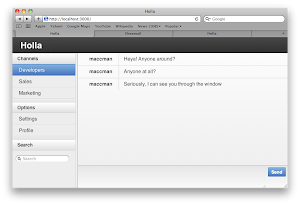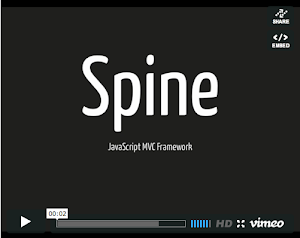Spine has a number of guides that take you step by step building example applications, as well as examples of real-world applications.
Tutorials
If you’re using the building your Spine applications in pure JavaScript, without using Node or Hem, then the TodoList guide is the one for you. It takes you through building a basic CRUD application, including model persistence using HTML5 Local Storage.
Otherwise, if you’re using CoffeeScript and Hem, you should checkout the Contacts guide, which will take you through all the steps necessary for building a fully fledged contacts manager, including CRUD, Stacks and search.
Example applications
Once you’re familiar with guides, you may want to browse some source code and see Spine in action. I find this is one of the best ways of learning a new language or framework, especially when it comes to best practices.
Spine has a number of these example applications, such as a todo’s list, a contacts manager, and some more advanced examples like a chat room.
Screencasts
Another great way of learning is through screencasts. So far, Spine has four screencasts on subjects ranging from Rails integration, realtime sync and infinite scroll. If you’ve got any suggestions on further additional subjects for screencasts, please get in contact.

